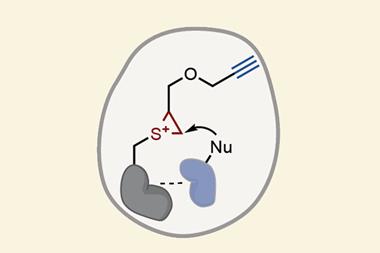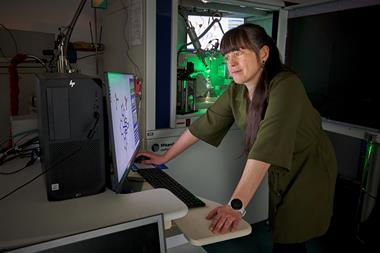Novel assay monitors enzyme activity in real time
31 August 2007

Conjugated polymers, with their chameleon-like colour changes, could help in the search for new drugs that inhibit enzyme activity, say Chinese scientists.
The real-time method developed by Shu Wang and colleagues at the Beijing National Laboratory of Molecular Sciences, operated by the Chinese Academy of Sciences, relies on the fluorescence properties of water-soluble light-emitting polymers. ’Our enzyme assay does not require fluorescent labels on the substrates,’ said Wang, ’and it offers a convenient mix-and-detect approach for rapid detection of enzyme activity.’
Wang’s conjugated polymer is a polyfluorene with benzothiadiazole (BT) sites and charged pendant groups. Under normal conditions, the polymer aggregates with a charged substrate molecule, which promotes electron transfer from the fluorene units to the BT sites and causes green fluorescence.
However, when the appropriate enzyme is added, the substrate breaks into small fragments and the interactions between the fragments and polymer weaken, keeping the chains separated. With less efficient energy transfer between the fluorene and BT sites, fluorescence shifts to blue, allowing continuous monitoring of enzyme activity.

So far, Wang’s method works for two enzymes - alkaline phosphate (ALP), a common enzyme for gene assays and immunoassays, and trypsin, a digestive enzyme, levels of which are increased in cystic fibrosis. Since the substrates must be charged in this method, Wang uses anionic adenosine triphosphate (ATP) and cationic polyarginine peptide to monitor the activities of ALP and trypsin respectively. ’This is quite a different type of assay,’ said Guillermo Bazan at the University of California, Santa Barbara, US. ’Although the challenge will be to make sure that aggregation is due exclusively to the modification of the enzyme substrate, the potential exists to develop assays that screen for drugs that modify enzyme activity,’ he said. Alison Stoddart
References
L An, Y Tang, F Feng, F He, S Wang, J. Mater. Chem., 2007, DOI: 10.1039/B706268K







No comments yet